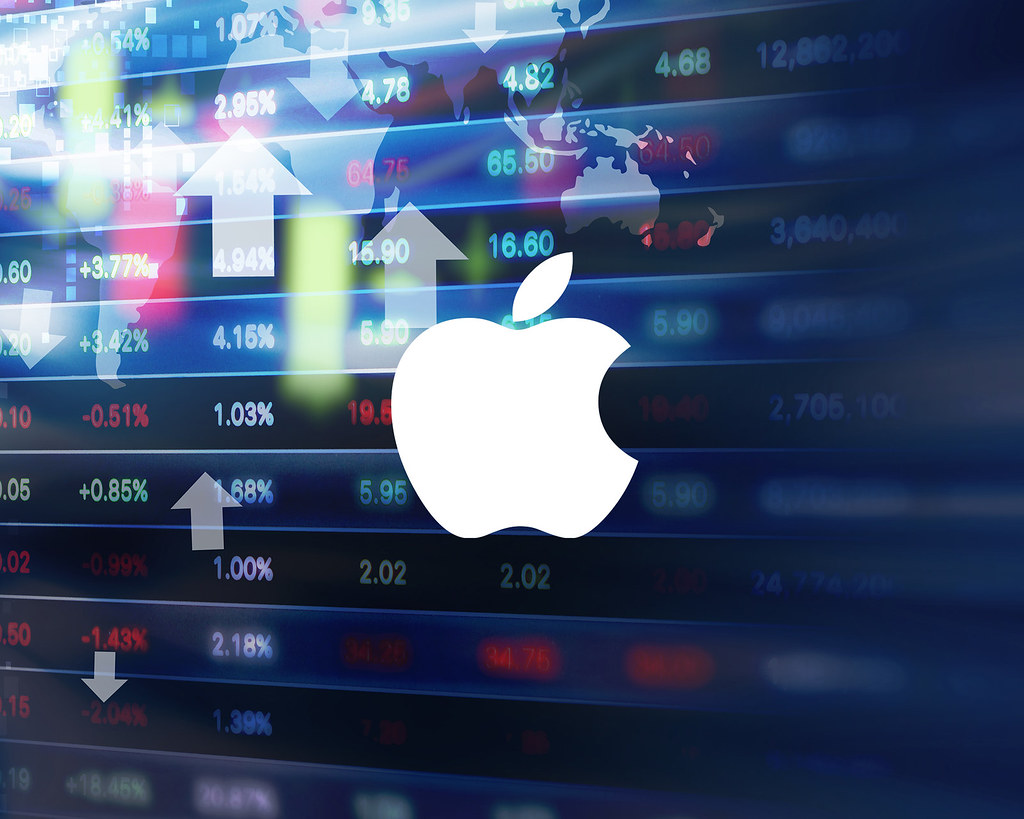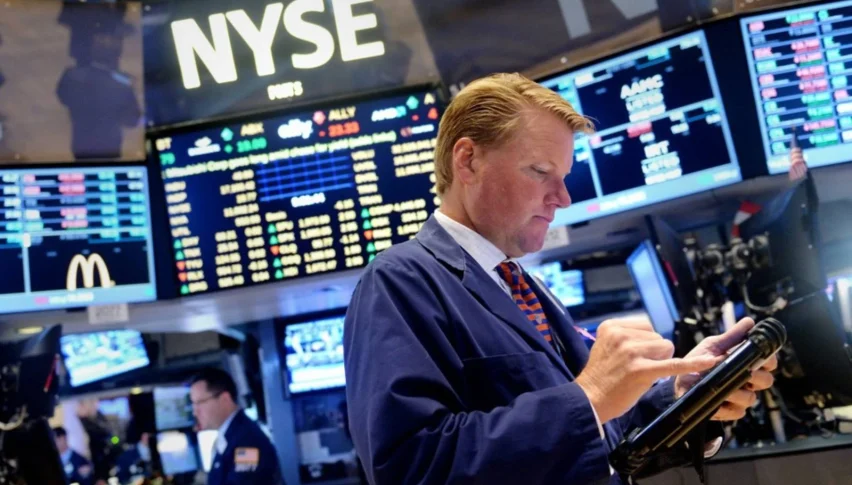Apple Stock 5% Tumble Leads Decline in Big Tech
Apple shares are among the biggest losers today, closing 5% lower as tech stocks turned bearish, dragging Nasdaq 2% lower too.

Markets started the week on the right foot yesterday, and they opened with a decent bullish gap today, but made a strong reversal and all major US indices closed sharply lower. Rising geopolitical tensions and renewed trade concerns appear to have weighed heavily on sentiment—particularly in tech and small-cap names.
With the S&P dipping back below 5,000 and the Nasdaq registering its worst day in weeks, investors remain cautious ahead of key data and further developments on the global trade front.
Closing Levels for Major US Stock Indices – April 8
S&P 500
Ended the day at 4,982.77, falling by −79.48 points (-1.57%)
The index dipped below the key 5,000 level, signaling increased market caution
Dow Jones Industrial Average
Closed at 37,645.59, down by −320.01 points (-0.84%)
Despite the loss, the Dow held up better than other indices, supported by strength in select defensive sectors
Nasdaq Composite
Finished the session at 15,267.91, shedding −335.35 points (-2.15%)
Tech-heavy Nasdaq saw the steepest drop among major benchmarks, hit hard by profit-taking in AI and software stocks
Russell 2000 (Small Cap Index)
Settled at 1,760.71, down −49.43 points (-2.73%)
The sharp decline reflects ongoing risk aversion toward smaller, more economically sensitive companies
Apple Shares Lead the Decline Amid Renewed Trade Tensions
Apple Inc. (AAPL) led losses in the tech sector today, plunging 5% and dragging the broader Nasdaq lower. After opening with a brief 3% bullish gap, Apple shares quickly reversed course, closing at $173.11. This marks an 8.5% drop so far this week and extends the company’s retreat from its December 2024 high above $260.
The slide follows renewed investor concerns over global trade dynamics, especially after fresh tariffs were announced over the weekend. Apple, which relies heavily on manufacturing hubs in China, India, and Vietnam, is seen as particularly exposed. Heightened tariffs on U.S. goods by China, now raising the effective import tax on Apple products to 54%, have fueled worries that the company may be forced to increase retail prices—potentially dampening demand in critical markets.
Tariff Relief Hopes Offer Only Temporary Support
Markets showed initial signs of optimism yesterday after U.S. President Donald Trump suggested that tariffs could be paused for three months if global powers return to negotiations. However, that sentiment proved short-lived as China responded with its own retaliatory measures, deepening the trade rift. Companies like Apple, which rely on complex international supply chains, are now grappling with the potential cost implications of these shifts.
Apple’s sharp reversal highlights the vulnerability of even the most well-capitalized firms when policy risk enters the picture. While the broader tech sector also traded lower, Apple’s 5% drop stood out as the most significant single-day decline among mega-cap peers.
Earnings Outlook: All Eyes on May 1
Looking ahead, investors are focusing on Apple’s upcoming earnings report, due Thursday, May 1, for fiscal Q2 2025. While Apple hasn’t issued forward guidance since the onset of the COVID-19 pandemic, Wall Street remains cautiously optimistic.
According to Yahoo Finance, analysts expect second-quarter revenue to come in at $94.1 billion, representing a modest 3.5% year-over-year increase from the $90.8 billion reported in the same period last year. However, with external pressures mounting, any signs of weaker demand or margin compression could weigh heavily on the stock’s short-term prospects.
Outlook
Apple’s sharp drop reflects deeper concerns that go beyond company-specific issues—it underscores the broader vulnerability of tech stocks in an increasingly fragmented global trade environment. As earnings season approaches and tariff developments unfold, investors will be watching closely for clues on whether Apple can maintain its edge in a shifting landscape.





